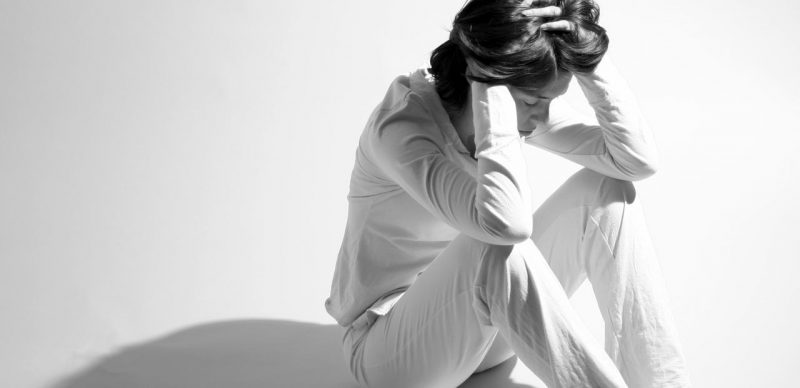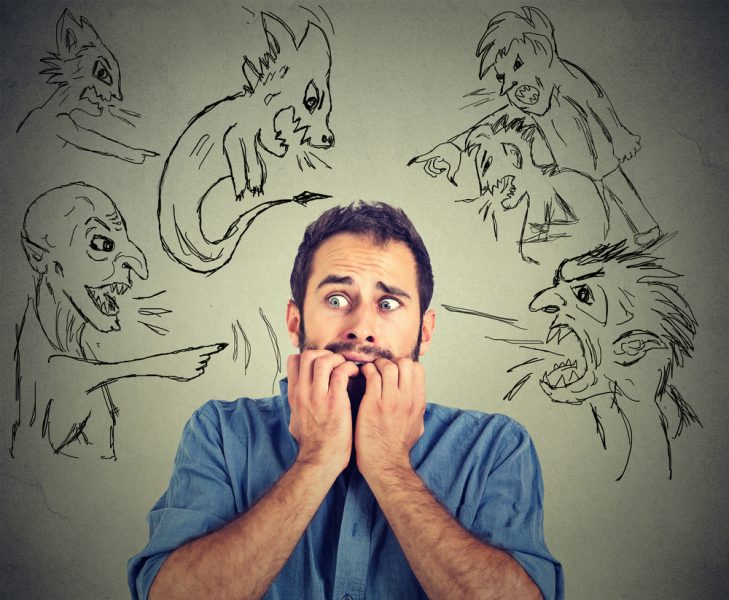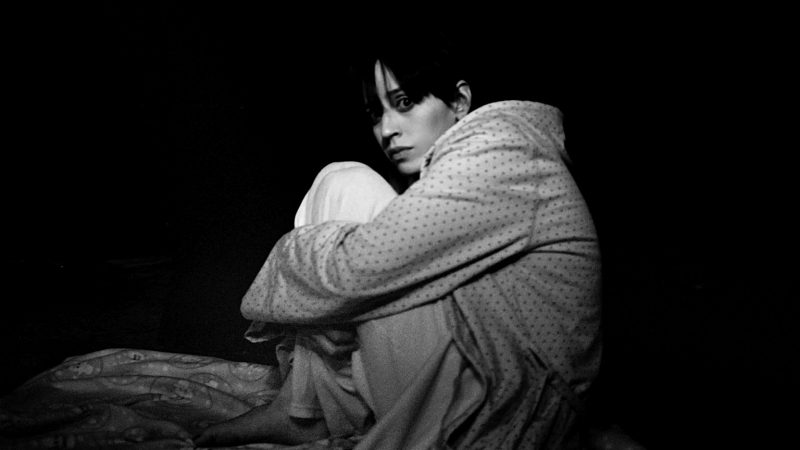Symptoms and signs of schizophrenia can begin to manifest at any age, but most often the disease occurs after 15 and up to 25 years. Interestingly, for unknown reasons, the female part of the population is more prone to mental illness than men. Pathology is characterized by a violation of the activity of the psyche, the disappearance of vivid emotions, the appearance of hallucinations.
The intellectual abilities of the patient remain at the same level as before the onset of schizophrenia, memory and knowledge are preserved.
For the treatment of the disease, various groups of drugs are used, the basis of which are psychotropic drugs. Even after the symptoms disappear and schizophrenia subsides, there remains a significant risk of relapse.
Material Content:
Schizophrenia - a common characteristic of the disease
Schizophrenia is a functional disorder of the brain that leads to a distorted understanding of reality, inadequate thoughts and actions. Often, sick people completely lose touch with the ordinary world, plunging into their reality. Sometimes floating out of it, they experience panic, because they believe that everyone wants to harm them, watching them. That is why it’s easier for schizophrenics to be inside their own little world.

According to statistics, the first signs of schizophrenia in adolescents or in young people appear more often, but sometimes the disease can begin at an older age. The sooner the clinical picture of the disorder begins to appear, the more serious the disorders will be and the pathology will be more severe. In addition, schizophrenia is much more aggressive in the male part of the population, although men are less likely to get sick than women.
The disease is characterized by a chronic course with episodic exacerbations. During a period of silence, schizophrenics can live a normal life, and when taking medications, avoid frequent relapses. The sooner symptoms are identified and treatment is started, the greater the chance of a prolonged remission.
Causes
So far, it has not been possible to identify the cause of schizophrenia; it is believed that genetics and environmental factors will play the main role.
Genetics

People whose close relatives suffered from schizophrenia have a 10% chance of getting sick. At that time, the risk of schizophrenia in women, men, or children who do not have a genetic tendency is about 1%.
Environmental impact
The development of pathology is facilitated by the experience of severe stress, since during this period the hormone cortisol is released in the body, which affects the brain.
Factors may include:
- intrauterine contact with a viral infection;
- intrauterine or postpartum hypoxia;
- severe illness in infancy;
- death of parents at an early age;
- child abuse in physical, psychological and sexual terms.
Congenital malformations of the brain

Violations of the normal structure of the brain, for example, ventricular hypertrophy or a decrease in tissue volume in other departments, can lead to the development of schizophrenia.
First signs of schizophrenia
In rare cases, the disease can begin suddenly, without any warning symptoms, but most often the behavior in schizophrenia changes even at the initial stages of development. The first to notice the patient’s unusual condition are his relatives, the schizophrenics themselves almost never recognize their condition.
The sick become eccentric, lose interest in life, cease to show emotions. They are isolated from friends, relatives, say unusual things, refuse classes that they used to love. Often they do not care what they look like, patients can walk in dirty, old, torn clothes or even without them.
The earliest signs of schizophrenia include:
- isolation from society;
- hostile, suspicious attitude towards others;
- disregard for appearance, neglect of hygiene;
- bouts of laughter or crying for no apparent reason;
- speech impairment;
- sleep disorders
- immunity of criticism, aggressive response to it.
Schizophrenics are dominated by a depressed mood, they are forgetful, unassembled. A striking symptom is the invention of new nonexistent words.
The main symptoms of schizophrenia
The clinical picture of schizophrenia is manifested individually in everyone, the presence of all the signs is not necessary, in addition, the symptoms are expressed to varying degrees. In children and adolescents, you can often find a positive mood during an exacerbation (laughter, causeless joy), while in men or women the disease causes a depressive state.
Positive symptoms
Positive symptoms occur due to excessive stimulation of the body with dopamine, which is produced in pathologically large doses.

These include:
- the appearance of obsessions;
- various types of hallucinations;
- incorrect speech;
- loss of control over movements;
- rave.
The set of signs in each case is different, but usually the case is not complete without hallucinations. The symptom is that the patient sees, hears, or feels what is actually not there.
There are four types of hallucinatory disorders:
- auditory - most characteristic of schizophrenia. A voice appears in the patient’s head or from surrounding objects that comments, criticizes a person’s actions, or instructs him how to live and what to do;
- tactile - develop less often auditory. It may seem to the patient that boiling water is poured on his skin or, on the contrary, ice water. Also, patients may complain about the feeling that someone is living inside them (fish swim through the veins, a snake crawls in the stomach);
- smelling - the most inexpressive hallucinations. A person complains about the presence of smells that no one except him feels;
- visual - rarely appear with schizophrenia.
Negative
The negative symptoms include manifestations of schizophrenia, which reduce the person’s functional abilities and dull his personal qualities. That is, if the patient spoke normally before the pathology, then speech disorders will be a negative symptom.

Negativism is manifested by the following symptoms:
- loss of desire to live, apathy;
- symptoms of autism - the patient takes refuge from people, creates his own world, where he spends most of his time;
- problems with speech - the appearance of invented words, meaningless rhyming, abrupt cessation of conversation in a half-word, fast and incoherent speech;
- the emergence of difficulties when you need to change the type of activity;
- pathological thinking;
- poor concentration of attention;
- sharp changes in the emotional state.
Disorganized
Disorganized symptoms are improper social behavior, inconsistency and illogical thinking.

Outwardly they appear:
- unusual facial expressions;
- improper behavior, manners;
- incoherent conversation;
- inappropriate manifestation of emotions.
Schizophrenics, in which disorganized symptoms predominate, behave like small children. They babble, laugh, cannot care for themselves.
Affective symptoms
Affective signs are a subspecies of negative symptoms, which includes changes in the patient’s mood for the worse:
- depression;
- blaming yourself for anything;
- suicidal actions or thoughts;
- constantly bad mood.
Classification of types of schizophrenia and their symptoms
According to what symptoms prevail in the clinical picture of the disease, seven types of schizophrenia are distinguished.

- Paranoid
A person does not lose the ability to think adequately and normal behavior, but he is constantly haunted by fear of something. At the beginning of the pathology, emotionality remains stable, but as schizophrenia develops, emotional-volitional disorders appear.
- Catatonic
The patient cannot think normally, he is attacked by hallucinations and delirium, he loses control over his actions. Catatonic stupor is characteristic of this type of schizophrenia.
- Hebephrenic
Hallucinations rarely occur, they are meaningless, are ridiculous. Basically, thinking and mood, which is constantly changing, suffers.
- Easy
Hallucinations do not arise, a person simply gradually loses interest in life. In neglected cases, productivity decreases to zero, the patient ceases to serve himself, refuses to perform any actions and make contact with the outside world.
- Undifferentiated
It is characterized by manifestations of several types of schizophrenia at once.
- Residual
The residual symptoms slightly make themselves felt, most often they are positive.
- Post schizophrenic
The appearance of symptoms after prolonged remission.
Differences in symptoms of schizophrenia in men, women, children and adolescents
Symptoms of schizophrenia in men are more pronounced and inhibit human functions more than in women. But the weaker sex often suffers from this pathology. In adolescents and children, a positive mood is more characteristic, and in patients with adulthood, depression prevails.

Schizophrenia in children is rapidly developing and leads to severe mental disorders. After 30 years, sluggish schizophrenia is more common, which is characterized by asthenization and depersonalization. Unlike other flow options, it does not develop over time and does not aggravate the patient's condition.
Diagnostics
To make a diagnosis of schizophrenia, the doctor must observe the patient for a long time, the change in his mood and behavior. Since schizophrenia is easy to confuse with other mental pathologies, the patient is often treated not by one, but by several doctors.They carefully record all the symptoms, and only then prescribe treatment, since incorrect therapy can aggravate the condition of schizophrenic.
To make sure the diagnosis is correct, special tests are carried out for the patient, which reveal inadequacy of thinking and mental disorders.

Then, additional research methods are prescribed:
- MRI
- checking blood vessels in the brain;
- EEG.
Correct and early diagnosis is the key to successful treatment. Therefore, with the identification of early signs in yourself or loved ones, it is important to seek help as soon as possible.












